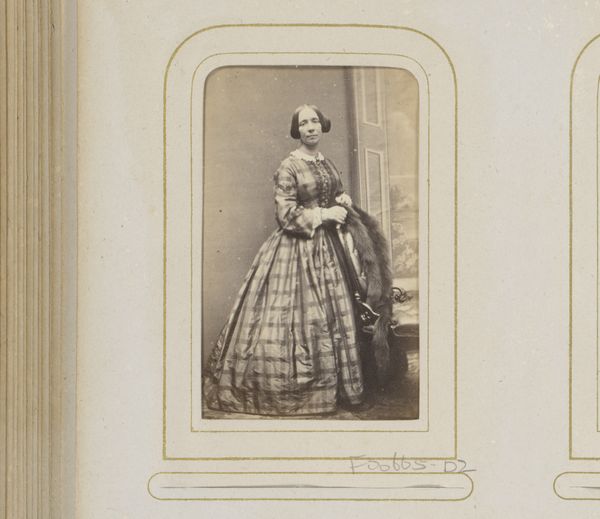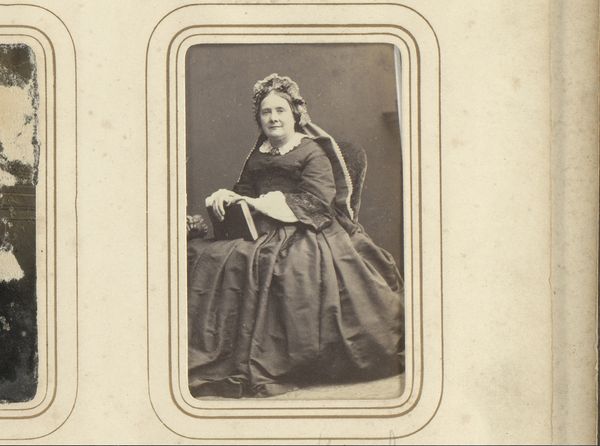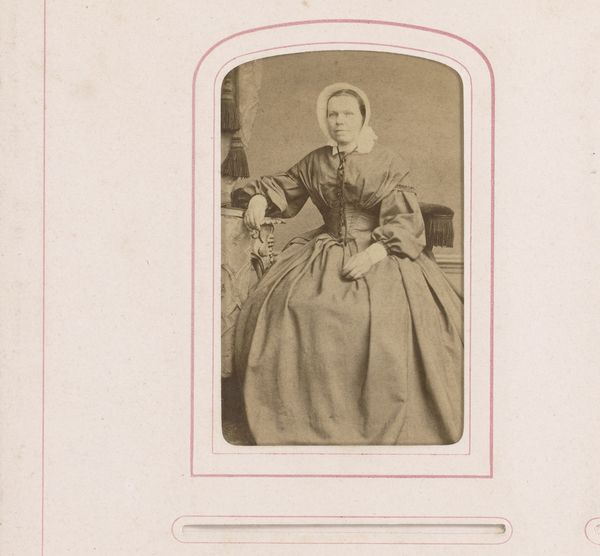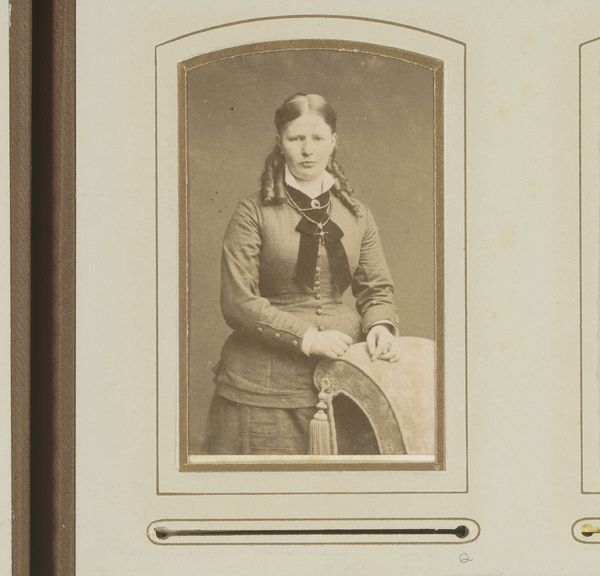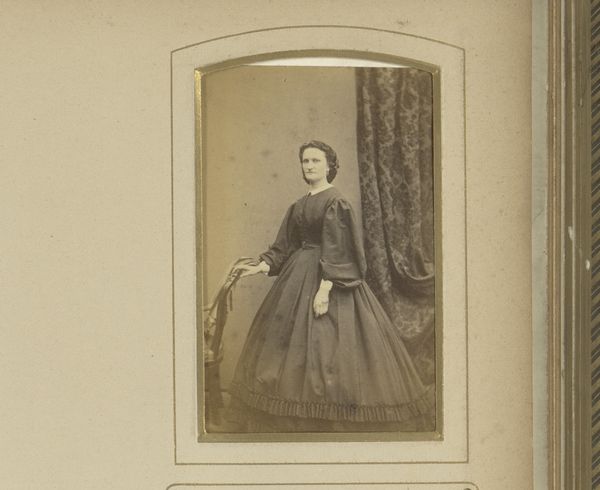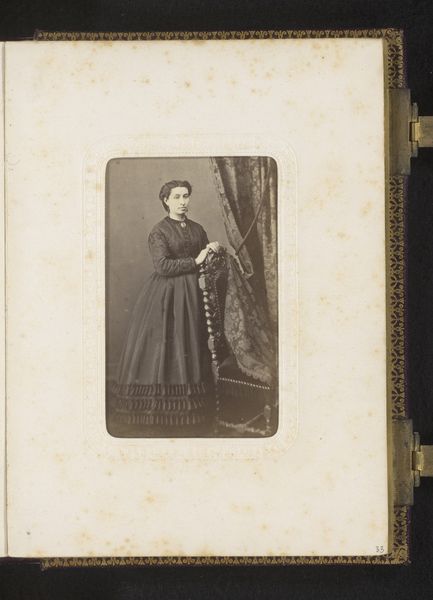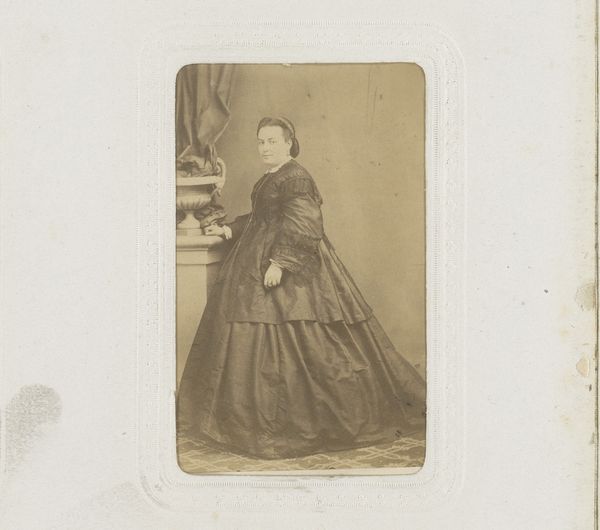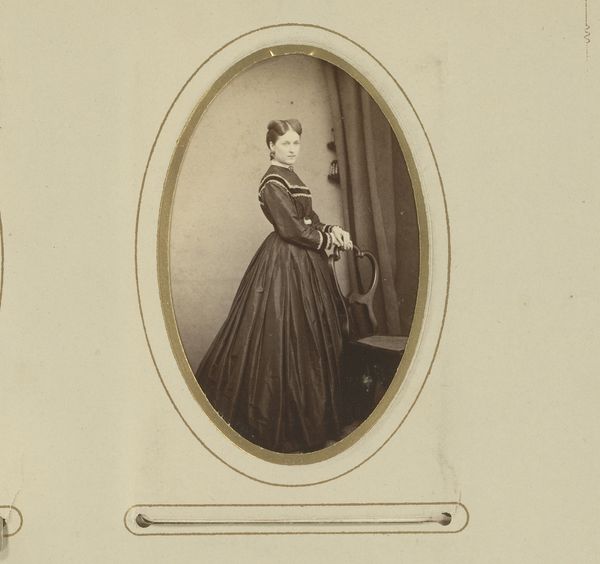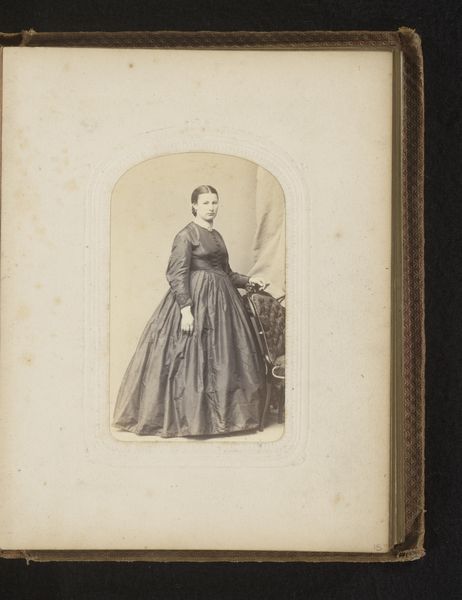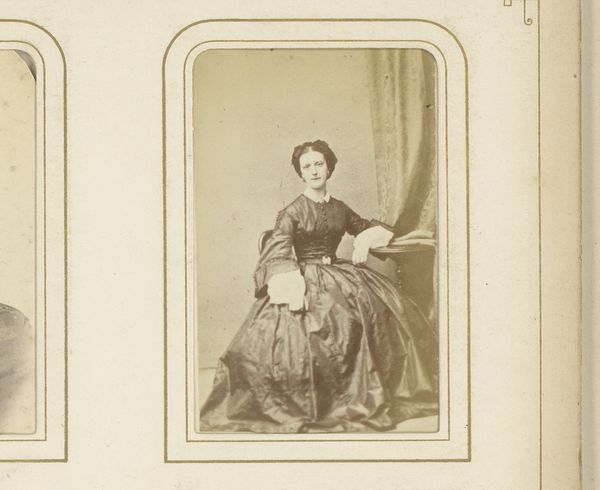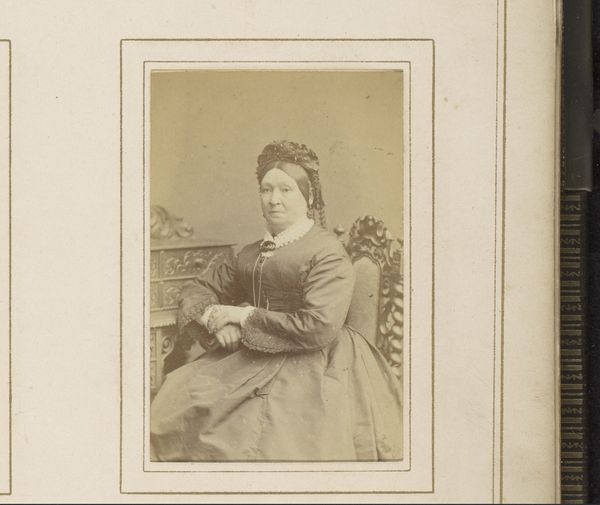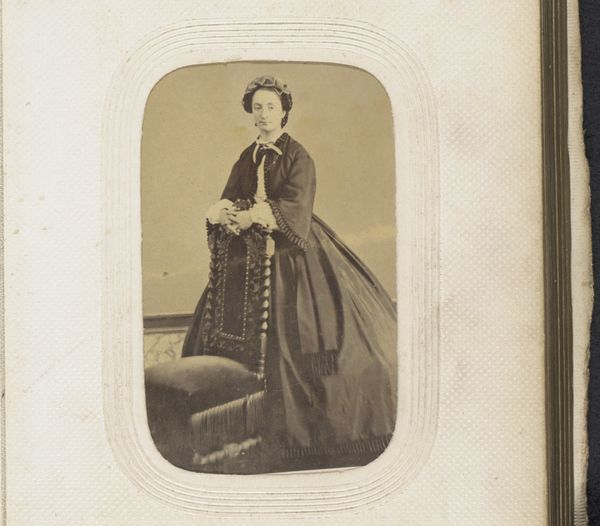
daguerreotype, photography
#
portrait
#
daguerreotype
#
photography
#
historical photography
#
19th century
Dimensions: height 84 mm, width 50 mm
Copyright: Rijks Museum: Open Domain
Curator: There's a quiet dignity radiating from this photographic portrait, wouldn't you agree? It’s entitled "Portret van een zittende vrouw met hoofddeksel" – or Portrait of a seated woman with head covering. The daguerreotype was captured sometime between 1884 and 1900, created by N. Paul. Editor: Immediately, I am struck by its almost suffocating formality. The dark dress, the lace at the collar and cuffs—it speaks volumes about the constraints placed upon women during this era, their self-expression so rigidly controlled by societal expectations. Curator: Precisely, and within those constraints, one seeks to decipher symbols of status, familial role, the inner psychology, or maybe simply self-presentation. The elaborate head covering, for example, likely signifies more than mere fashion, doesn’t it? Perhaps wealth, piety, or belonging to a particular social echelon? Editor: I see something a little sadder, maybe resignation. Her dress is heavy and unyielding, as is her posture. She’s sitting on the edge of the chair as if perched, rather than relaxed. What does that tell us about women’s roles? How photography played a part in performing social scripts. Curator: I believe that photographs like this offered the sitter agency, regardless of how constrained it was, over one’s visual legacy, the ability to fashion a curated, visual narrative of one’s identity in a time of massive industrial shifts, social anxieties. Each symbol is deliberate. Editor: And I challenge us to consider whose gaze we are upholding by merely admiring such “dignity” without fully investigating its historic cost. The portrait embodies power structures, gender roles, even potential social immobility, fixed, framed and fossilized by early photographic processes. Curator: A valid point! These images provide clues into social conditions, and this invites discourse on our own cultural biases. Visual analysis can allow the sitter a new story, a visual reincarnation that challenges accepted interpretation. Editor: Ultimately, the image remains a rich, complex, layered representation inviting further contemplation of her life and legacy as well as our own relationship with representation and historical narratives.
Comments
No comments
Be the first to comment and join the conversation on the ultimate creative platform.
